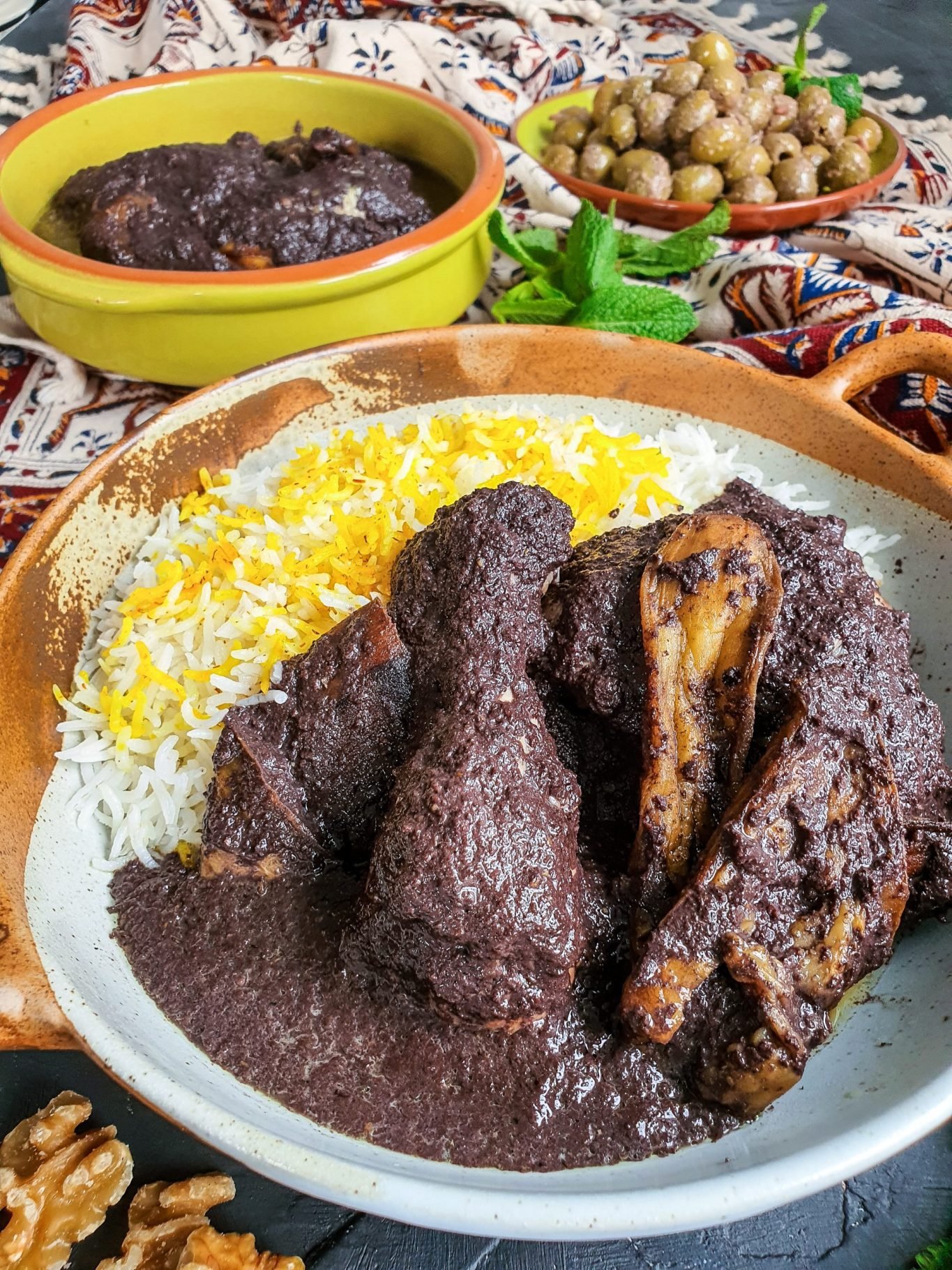Fesenjan – Persian Walnut and Pomegranate stew

Ingredients
- 1 Large Chicken cut into 6-8 pieces
- 4 cup Walnuts
- 1 Medium Onion diced
- 2 Medium Aubergines (optional)
- 2 tbsp Pomagranate Molase ((See Notes))
- 1/2 tsp Turmeric
- 1 tsp Black Pepper
- 2 tsp Salt
- 1 tsp Cinnamon
- 1 tsp Kolpar ((optional))
- 10 tbsp Brewed Saffron (For Fesenjan and rice)
- Serve with basmati rice
Instructions
- 1 In a large pot where Fesenjan is going to be made, start shallow frying the chicken in oil with a pinch of turmeric until it becomes golden and crispy on the outside.
- 2
Wash, peel and cut the aubergine long ways with half an inch thickness. Sprinkle a little salt all over the slices to drain as much water from the aubergine as possible. Wash and dry the aubergine and set aside to fry.- 3
Meanwhile prepare the walnut mixture by placing the walnut with 2 cups of boiling water in the food processor and blending until completely smooth, about 5-6 minutes. This has to be smooth, read the notes above.- 4
Remove the chicken from the pot and remove most of the oil. Use the same oil so to fry the aubergine until golden.- 5
In the remaining oil sauté the onion until softened. Add the walnut paste and allow to sauté for 2-3 minutes before adding 7 cups of boiling water to the pot. Don't add the water to the pot directly, pour the water into the dish of the food processor to get every bit of that walnut paste into the pot.- 6
Allow the mixture to come to a boil on high heat, then turn down the heat and allow to simmer on low heat for 2 hours. Mix occasionally to ensure that it doesn't stick to the bottom of the pot. After a few hours you will see the colour changing gradually.- 7
Add the molasses and allow to continue simmering on low heat for an extra hour, the more the Fesenjan cooks the darker it will become the aim is to have a dark brown or black colour. You may also need to adjust how much molasses you use depending on the brand and authenticity of the product you are using.- 8
After exactly 3 hours of cooking, add the chicken to the pot along with the rest of the seasoning, by this point you should be able to see a beautiful layer of oil building up on the top and this is the best type of oil as it is the oil extracted out of the walnuts. If you have no oil appearing on the surface, add half a cup of cold water to the pot, but if your Fesenjan is extremely thick then add 1 full cup of cold water. The temperature of the cold water will shock the walnut and it will start to extract the oil.- 9
Meanwhile fry the aubergine until fully browned and once the chicken has been cooking in the pot for 45 minutes, layer the aubergine all over the surface, its absolutely fine if they overlap in the pot, do not mix or stir at this point. The aubergine only sit on the surface in the pot and soaks up the stew.- 10
Brewed saffron in hot water and after pour all over the aubergine. You can gently press down ever so slightly to ensure that the stew is just about covering the aurbgine pieces.- 11
Serve with rice and my Pomegranate Walnut Marinated Persian Olives (Zeyton Parvarde). - 2